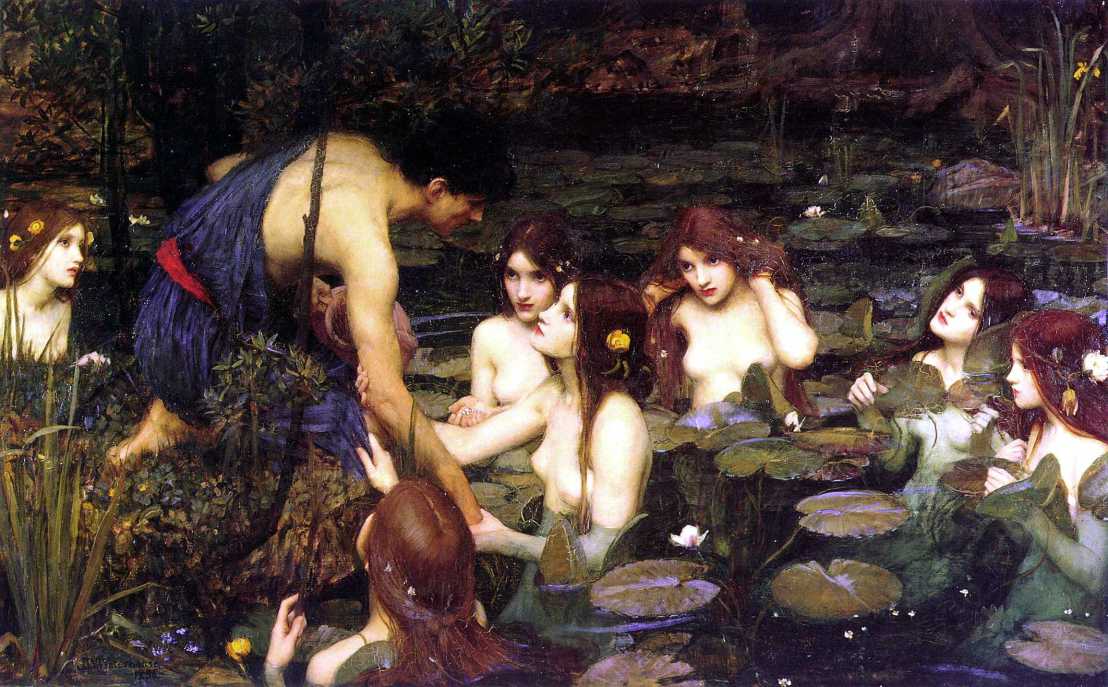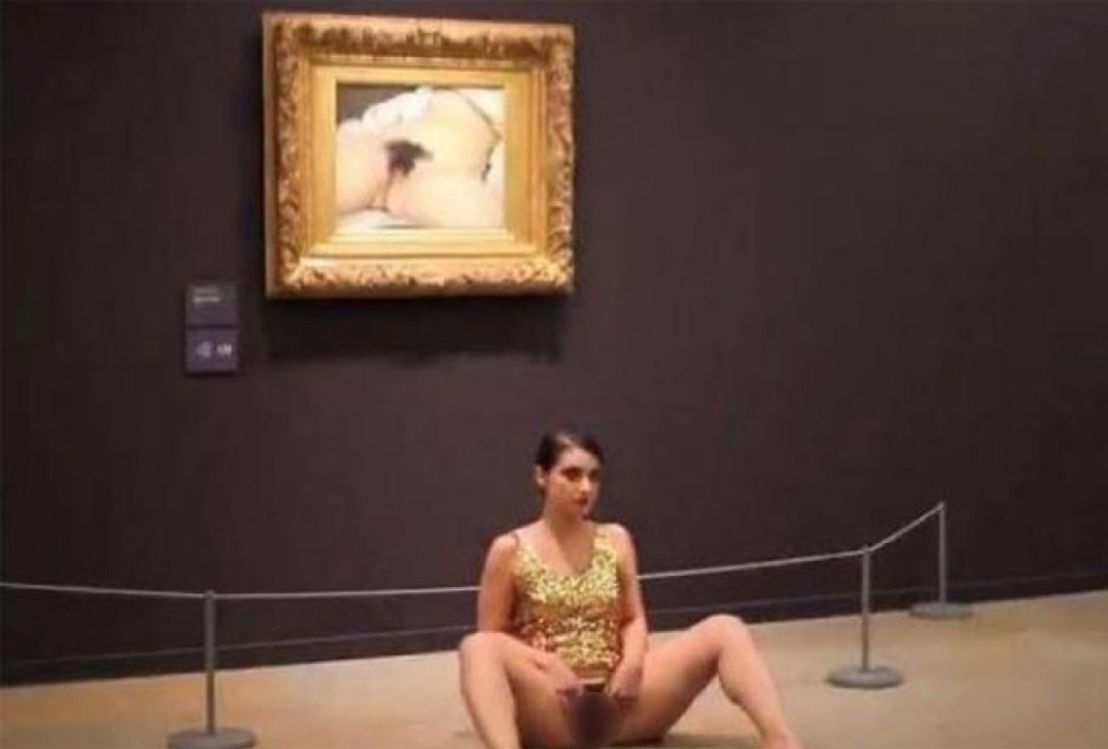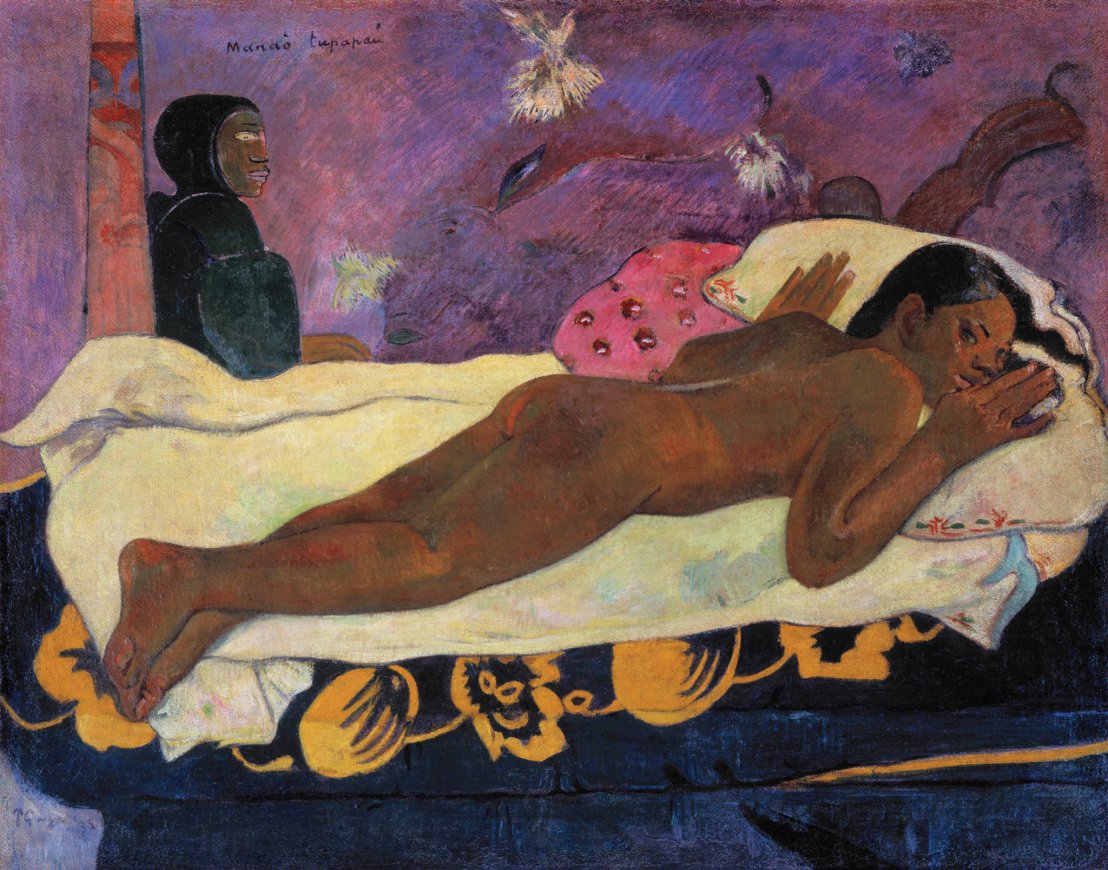 Demand is growing for the Museum of Art in New York to remove the painting ‘Thérèse Dreaming‘ (1938). The reason is that the work by Balthasar Klossowski de Rola shows an underage girl in a suggestive pose. An art gallery in Manchester England removed a Waterhouse painting of naked nymphs. ‘Hylas and the Nymphs‘ (1896) shows how Hercules’ handsome male lover is beckoned to his death in a pond by bare breasted young girls. The gallery says it was removed “…to prompt conversation about how we display and interpret artwork“.
Demand is growing for the Museum of Art in New York to remove the painting ‘Thérèse Dreaming‘ (1938). The reason is that the work by Balthasar Klossowski de Rola shows an underage girl in a suggestive pose. An art gallery in Manchester England removed a Waterhouse painting of naked nymphs. ‘Hylas and the Nymphs‘ (1896) shows how Hercules’ handsome male lover is beckoned to his death in a pond by bare breasted young girls. The gallery says it was removed “…to prompt conversation about how we display and interpret artwork“.
In 2014 artist Deborah de Robertis, sat down in front of painting ‘L’Origine du monde‘ (1866) by Gustave Courbet and exposed her vagina. The artist was taken away by police. Complaints against the her were filed for sexual exhibitionism. The artist says her art is to alter the usual roles of the artist, the model and the viewer. She makes the models in the paintings active and no longer passive.

At the Gerrit Rietveld Academie in Amsterdam there was a debate around a video presentation. The Art Critical Platform ‘Keeping It Real Art Critics‘ (Kirac) discuss art and culture in their videos on YouTube. They wanted to show their new video at the art school. But the direction cancelled this. (Ex) students called for a boycott of the Kirac event on Facebook. Complaining, about statements from previous Kirac outputs that where perceived to be racist and sexist. Kate Sinha form the platform had spoken out against the ‘left-induced indifference’ of the Stedelijk Museum Amsterdam. ‘The pinnacle being the exhibition by Zanele Muholi”. In which according to her; “the visitor was expected to be interested in the lazy spins of a spoiled slut, only because she comes from South Africa, is lesbian and black.” In another Kirac episode about the # MeToo discussion and Harvey Weinstein. Sinha unfolds the theory that attraction and the threat of violence are connected. “I think many women enjoy their own lust by looking for that boundary of defilement.“
 The Rietveld responded by canceling the presentation saying; “This is hurtful, also for groups of people present in our institute. It said it wanted a ‘safe learning environment. Of course, freedom of speech is important, par excellence in art. But other fundamental rights, such as the right to equal treatment, must not be compromised.”
The Rietveld responded by canceling the presentation saying; “This is hurtful, also for groups of people present in our institute. It said it wanted a ‘safe learning environment. Of course, freedom of speech is important, par excellence in art. But other fundamental rights, such as the right to equal treatment, must not be compromised.”The art school was accused of no platforming and censoring critical debate. Detractors fear that art-schools and universities are becoming echo chambers. Bubbles of received opinion in which the same lazy prejudices consistently reverberate.
Kirac uses a provocative style that some think goes too far. But culture does not benefit from censorship, you have to debate each other.
On social media, the polarization goes very fast: everyone is directly for or against. An academy will have to consider how to deal with these kinds of complaints.
Social media themselves have banned works of art because of sexual content. ‘L’Origine du monde’ being one example.
 Other debates were held about the artists themselves.
Other debates were held about the artists themselves.Many feminist art critics argue that Degas’ intimate scenes, particularly of the bathers, are voyeuristic and objectify women. He also was an Anti-Semite. Egon Schiele might have had sex with minors, Gauguin abandoned his family to move to Tahiti. There he supposedly bedded local girls as young as 11. He subsequently gave many of them syphilis.
 Picasso was a misogynist, two of the seven leading women in his life killed themselves and two went mad.
Picasso was a misogynist, two of the seven leading women in his life killed themselves and two went mad.Bad people make good art all the time. Not only can terrible people person make a great art, but it can even depict a very bad thing. We should be able to separate the artist and the work. Furthermore even if the subject matter is not to our moral standards it can still be a brilliant piece of art. Standards might change over time but this doesn’t necessarily have to mean we have to ban the work. Art should not be boycotted but discussed. If it provokes debate that is exactly what we should do; talk about it. When we ban it then we erase all the evidence and risk just being left with bland unimaginative art.
Advertisements

